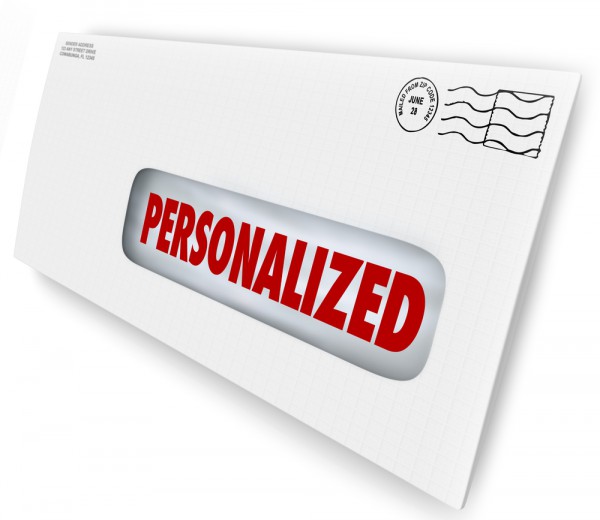How personalization is changing the face of marketing [Q&A]

[BetaNews Recommended Reading] Companies today have access to more information about their customers than ever before. This gives them the opportunity to effectively personalize their marketing messages, but are they failing to take advantage of the opportunities this offers? And with large volumes of often unstructured data available how difficult is it to find and use the right information?
We spoke to Sara Vera, data scientist at CRM specialist Insightly to find out more about the challenges enterprises face in adapting to a personalized world.
BN: Is personalized communication really a more effective way of reaching customers?
SV: Consumers today are savvy shoppers and expect companies to understand them and their needs. If you can predict customers' needs or wants based on previous purchases, they are more likely to make a purchase in the future, while also increasing their overall spend. Personalization evokes a more emotional response, driving customers to take action. For example, an email that comes from a real person rather than a mass email blast, complete with a personal tone, will see much higher open rates. A personal touch can make all the difference.
BN: Does personalization only work for existing customers or can it help recruit new ones too?
SV: Both. Even if you don't know a potential customer's purchase history, you can leverage other details, such as location, age or gender to create individualized messages. Your communication with customers might be based on broad information, but it's a better starting point than not adding personalized information at all. If something in your communications resonates with your potential customer, he or she is more likely to engage with your brand.
BN: Is there a danger that companies can simply be overwhelmed by the amount of data they’re now able to collect?
SV: This is a tricky question because there are a couple of things to consider. There is no danger of being overwhelmed by the amount of data a company collects if the leaders of the company hire the right data architects, scientists and analysts to figure out what information is most important to their customers, how to use the data and how to act on those insights. However, if a company hasn't hired the right staff, it can be easy to think it is collecting and analyzing the right data when that is not the case. This is why it takes solid statistical education to get good insights when you have a lot of data with which to work. The main takeaway is to hire competent employees that you can trust.
BN: How can businesses make use of unstructured information, such as that collected from social media?
SV: Considering that 80 percent of a company's data is unstructured in the form of emails, social media posts and phone calls, it's easy to overlook valuable insights, which can lead to a lot of missed opportunities. It can seem like a daunting task, but capturing and analyzing this data is valuable for identifying patterns and trends that can give you an idea of your customers' thoughts and feelings. Once you've decided on a toolset, you can do several types of analyses with unstructured data, such as:
* Signal detection and trend analysis to identify recurring themes and patterns.
* Information extraction, categorization and mapping to pull information out of text and map it to something. For example, pulling a location name in text and putting it on a map.
* Content-based clustering to segment information, or even customers, based on similarities in preferences, feelings and thoughts.
BN: How long, and how much data, does it take before a consumer profile is accurate enough to be useful?
SV: The more you know about your customers, the easier it is to figure out why they buy from you and where there are opportunities to sell more. It doesn't take much more than age and gender to assume quite a bit about your customers. Add location, income and/or spending habits and you have a lot of information with which to work. Once your customers build a purchase history, you should have a pretty good idea of who they are as consumers. If you want to dive deeper into the 'why' and 'how' of customer behavior, consider surveys and interviews with various customer segments to gain a comprehensive view of who your customers are and where opportunities lie.
However, proceed with caution when using third-party data to fill out customer profiles; it is sometimes treated as static information when it's really not. For example, if you email a customer offering him a romantic getaway promotion, but he is recently divorced, he is much more likely to be annoyed and unsubscribe from your email list than if he had received a generic email.
BN: Is it likely that consumers will become resistant to increasing levels of personalized communication? How can they remain in control?
SV: Customers could become resistant to increasing levels of personalized communication after a point, however, they do appreciate some level of targeted marketing. Privacy versus targeted, personalized marketing will be a difficult thing to balance over the next few years. There is so much data out there and companies are continuously experimenting to determine where the line should be drawn. Customers don't want to be reminded of the NSA or Big Brother, but they do like to see ads that are interesting to them. Businesses need to be smart about data collection and only aggregate information relevant for basic targeted marketing and remember to keep that data updated and accurate.
Image Credit: iQoncept / Shutterstock